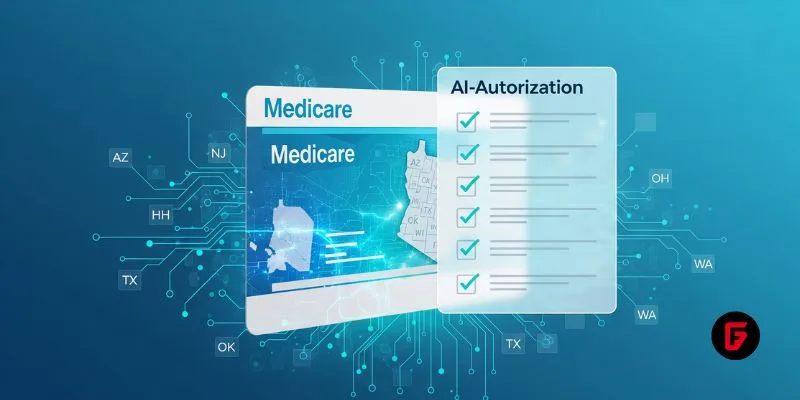By futureTEKnow | Editorial Team
If you’ve worked with large language models (LLMs) over the past few years, you’ve likely heard plenty about prompt engineering. But as AI systems become more sophisticated, a new term is rising in prominence: context engineering. This isn’t just a buzzword—it’s a fundamental shift in how we interact with and optimize AI.
Prompt engineering, at its core, is about crafting the right instructions to get the best output from an AI model. It’s a bit like giving a chef a recipe: the more precise the instructions, the better the result. But as anyone who’s worked with LLMs knows, even the best prompts can sometimes produce wildly inconsistent results.
Enter context engineering. Instead of focusing solely on the instructions, context engineering is about providing the AI with the right background information, relevant data, and situational awareness. This is especially crucial as AI models grow more advanced and their context windows—the amount of information they can process at once—expand dramatically.
Context windows are the AI’s working memory. With older models, these windows were relatively small, making prompt engineering sufficient for most tasks. But today, models like GPT-4 can handle tens of thousands of tokens, and experimental models are pushing into the hundreds of millions. This is both a blessing and a challenge.
Optimizing these context windows isn’t just about cramming in as much information as possible. It requires a nuanced understanding of what data is truly relevant, how to structure it, and how to balance detail with efficiency. This is where the real art—and science—of context engineering comes in.
To master context engineering, you need a unique blend of skills:
Technical know-how: Understanding how token limits and model architectures impact performance.
Strategic thinking: Deciding what information is most valuable to include in the context window.
Information architecture: Structuring data so it’s both accessible and efficient for the AI.
Domain expertise: Knowing which contextual elements are critical for specific applications.
Analytical abilities: Evaluating how different approaches to context management affect outcomes.
These skills go far beyond the basics of prompt engineering, reflecting the growing complexity of AI systems and the need for more sophisticated approaches.
Prompt engineering, while valuable, often treats AI as a black box. It focuses on the input without fully considering the system’s environment or capabilities. This can lead to ambiguity, inconsistent results, and difficulties in evaluation. As context windows grow and AI tasks become more complex, these limitations become more apparent.
Context engineering is quickly becoming the preferred approach for working with advanced AI systems. It addresses the shortcomings of prompt engineering by focusing on the bigger picture—not just what you tell the AI, but what you help it understand. For anyone working in AI today, mastering context engineering is no longer optional—it’s essential.
Founded in 2018, futureTEKnow is a global database dedicated to capturing the world’s most innovative companies utilizing emerging technologies across five key sectors: Artificial Intelligence (AI), immersive technologies (MR, AR, VR), blockchain, robotics, and the space industry. Initially launched as a social media platform to share technology news, futureTEKnow quickly evolved into a comprehensive resource hub, spotlighting the latest advancements and groundbreaking startups shaping the future of tech.

Bridgit Mendler’s Northwood Space is pioneering mass-produced ground stations, enabling scalable, high-speed connectivity for the new era of satellite networks and megaconstellations.

SpaceX aims to nearly double launches from Vandenberg in 2025, facing support from federal agencies but strong objections from the state and local communities.

Traditional Medicare will pilot AI-assisted prior authorization in 2026 across six states, focusing on high-risk outpatient services. Clinicians retain final say, but incentives and access concerns loom as CMS tests fraud reduction and “gold card” exemptions. Here’s what providers and patients should know.

OpenArt’s new “one-click story” compresses scripting, visuals, and edits into ready-to-post short videos—fueling viral growth and a fresh IP debate. We break down how it works, adoption signals, what’s next (multi-character, mobile), and practical guardrails creators and brands should follow to stay original and compliant.

OpenAI’s o3 swept the Kaggle AI chess tournament, defeating xAI’s Grok 4–0. The victory fueled the intense rivalry between Altman and Musk, reshaping AI benchmarks.

NASA and Google’s AI-powered Crew Medical Officer Digital Assistant enables autonomous diagnoses for astronauts on Mars missions, redefining remote healthcare for space and Earth.

Pinterest’s CEO confirms that fully agentic AI shopping is years away, as the platform invests in AI-powered tools to enhance discovery, inspiration, and personalized shopping experiences for millions.

Shopify’s new AI shopping tools are transforming e-commerce, letting agents and chatbots deliver smooth, personalized shopping and checkout experiences across platforms. Learn how these innovations reshape online retail.

Meta has acquired WaveForms AI, a startup pioneering emotion-detecting voice technology. Learn what this means for Meta’s AI voice ambitions and the future of AI audio.

Tracelight is revolutionizing financial modelling for finance professionals with AI-powered Excel tools that automate complex tasks, reduce errors, and unlock new analysis capabilities. Learn how this next-gen solution changes the future of spreadsheets.

China’s Lanyue lander completed its first major test, showcasing advanced engineering for safe, crewed moon landings before 2030. Explore how this milestone shapes the space race.

Microsoft rolls out GPT-5 across its Copilot suite, integrating smarter AI for enterprise and personal users. Discover new features, free access, and what sets this launch apart.
To provide the best experiences, we use technologies like cookies to store and/or access device information. Consenting to these technologies will allow us to process data such as browsing behavior or unique IDs on this site. Thanks for visiting futureTEKnow.